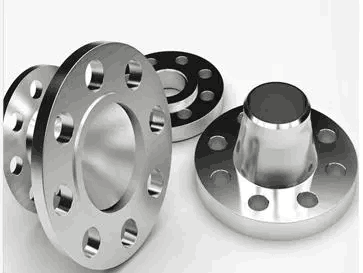Pipe Flange is a common connecting piece, widely used in chemical industry, petroleum, machinery manufacturing, shipbuilding and other fields. It has the advantages of tight connection, easy disassembly and easy maintenance, but it also has some disadvantages. This article will analyze the advantages and disadvantages of flanges to help readers better understand and use flanges.
The function of flange:
Connection: Flanges can connect equipment such as pipes, valves, pumps, and containers. Different equipment, pipes or components can be tightly connected together by fixing flanges such as screws or nuts.
Sealing: The flange adopts the principle of surface sealing, which can effectively ensure that the connection will not leak air, water or oil. The sealing effect is good, which can ensure safe and stable operation during the production process.
Support: Flanges can be used as support components for pipelines or equipment, which can improve the stability of pipelines or equipment and reduce vibration and deformation caused by stress.
Convenient disassembly: Flange disassembly is simple and convenient, suitable for equipment and pipes that require frequent cleaning, inspection or replacement, and is also convenient for maintenance personnel.

Advantages of flange:
1. Reliability.
The flange adopts the face sealing principle, and the connection is tight and will not loosen due to vibration or distortion, ensuring the safe and reliable operation of the fluid delivery system, and it can operate stably even under high temperature or high pressure working conditions.
2. Economical.
The manufacturing cost is relatively low and the assembly is simple. It is fixed by screws or nuts, which can improve production efficiency and reduce production costs.
3. Easy to install.
The flange design takes into account disassembly, cleaning, maintenance and replacement, has good operability, and can reduce manpower, material resources and time costs.
Flange connection connects two parts with flange sealing gaskets, screws, etc., which facilitates maintenance, replacement and other operations without the need to disassemble the entire pipeline.
4. Versatility.
It adopts standardized design, complies with the standards and specifications of many countries and regions, and can be used with various brands of equipment and pipelines.
5. Wide connection range.
Able to connect equipment and pipelines of various materials, specifications and types, such as steel, chemical industry, petroleum, natural gas, electricity and water conservancy and other fields.
6. Diversified choices.
There are many types and specifications of flanges. Suitable flange types and specifications can be selected according to different needs to meet various production processes and customer needs.
7. Easy to inspect and maintain.
The piping system allows for regular inspection and maintenance, which can be easily done by simply removing the flange.
8. Reduce installation costs.
While the unit price may be slightly higher than other connection methods, the total cost is usually lower in the long term due to easy installation, low maintenance and long life.
9. Easy to expand and transform.
As the production scale expands or the process changes, it can be easily expanded and modified without large-scale changes to the entire pipeline system.
10. High safety.
Through the tightening effect of bolts, the pipe joints are made more solid and reliable, effectively preventing the pipes from loosening or leaking due to vibration, temperature changes and other factors.
Disadvantages of flange:
1. Inconvenient installation: Compared with other connection methods, flange connection requires the installation of complete flanges, gaskets, bolts and other accessories. The installation is more complicated and requires the support of professional technology and tools.
2. Higher cost: Flange connection requires the use of high-quality sealing gaskets, bolts and other accessories, which is expensive, and the investment in the entire pipeline system is also relatively expensive.
3. The structure is relatively cumbersome: The structure of the flange connection is relatively cumbersome and requires pairing. A slight error may cause problems such as leakage and vibration in the pipeline system.
Summarize:
As a common mechanical connector, flange has multiple functions and advantages of connection, disassembly, sealing, vibration isolation and pressure bearing. It also has some minor disadvantages. It is widely used in industrial fields, such as pipelines, containers, equipment and other fields, and plays a very important role in actual use. Choosing the appropriate flange connection structure can not only improve production efficiency and safety, but also reduce losses in maintenance costs and downtime.
Go here to learn more: Stainless steel pipe fittings vs Carbon steel pipe fittings


